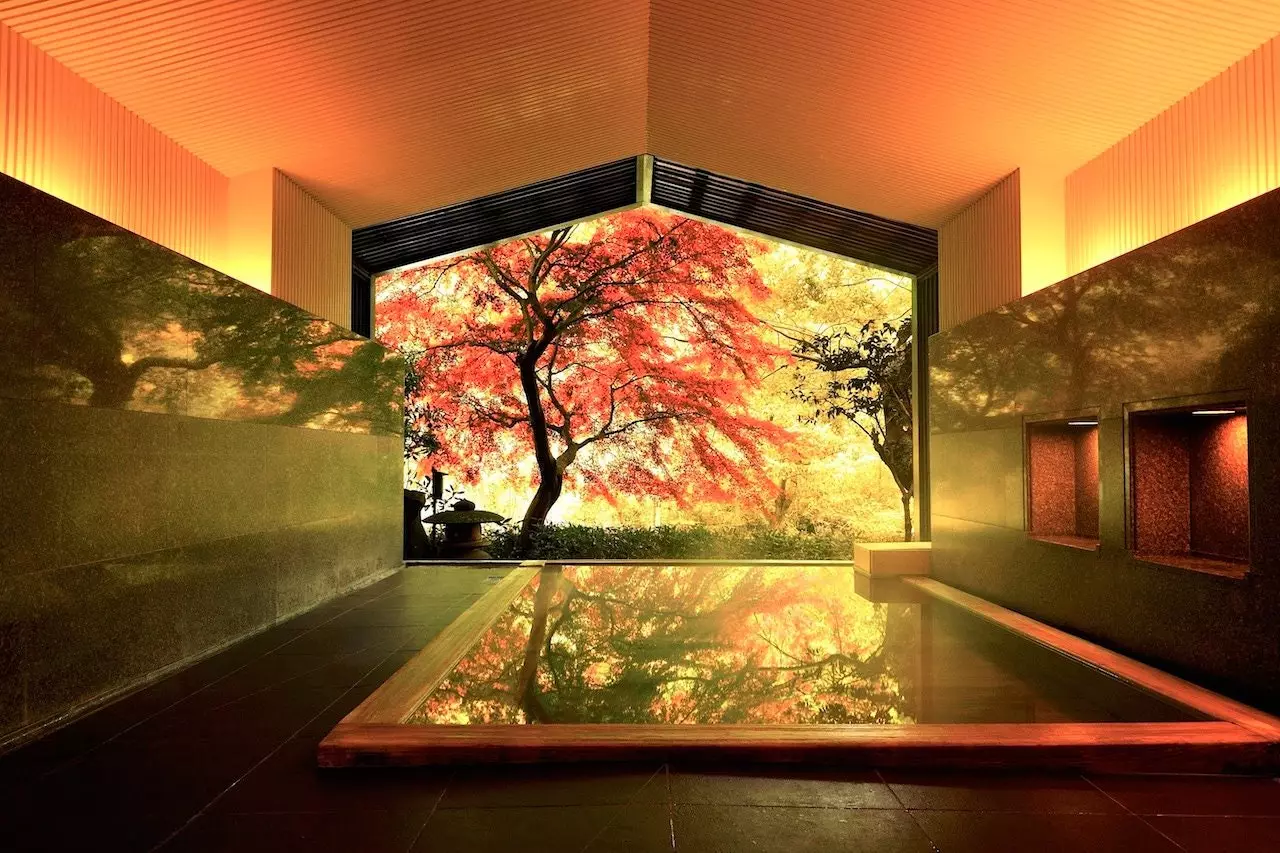
One of the bath rooms at the KAI Hakone ryokan, in a forest by the Sukumo River.
This year does not happen. Among your travel purposes for this 2019, that long-awaited trip to Japan stands out and you do not want to miss out on the experience. It will be practically impossible for you to eat badly in one of the countries with the most Michelin stars in the world, but what about sleeping?
What happens with the rest of the traveler who comes to know the Japanese archipelago? The best, the most intelligent, adequate and contextualized is book a ryokan, traditional Japanese accommodation that sometimes includes hot spring baths (onsen) and much, much more.
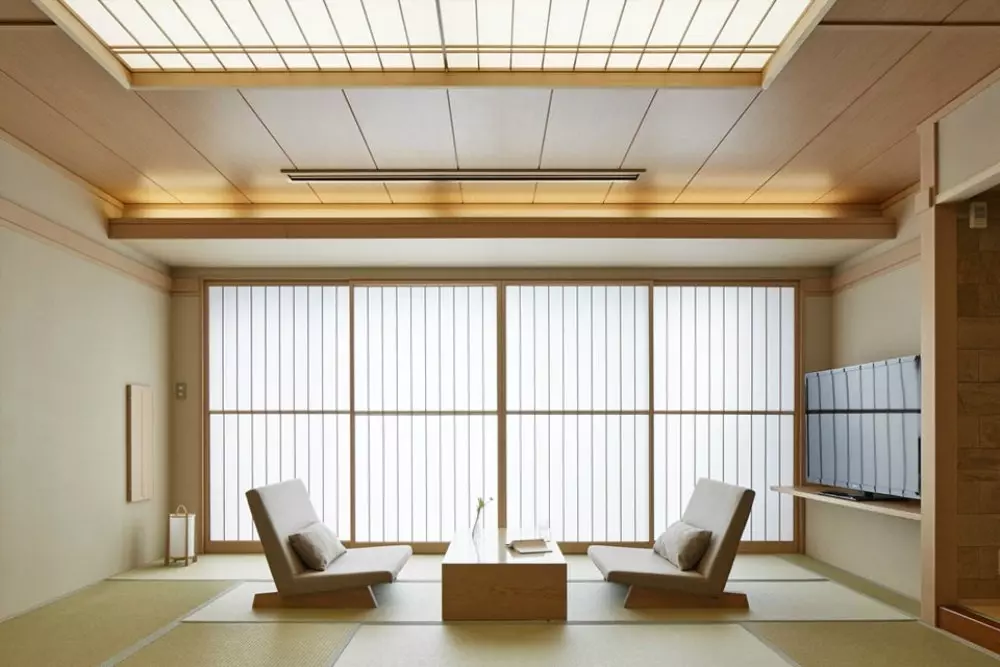
Purely Japanese aesthetics of the Konansou ryokan, at the base of Mount Fuji.
Sleeping in a ryokan onsen means immerse yourself in the heart of Japanese culture, because, in addition to enjoying the healing benefits of immersing yourself in its natural mineral-medicinal waters (toji), the stay is complemented by protocols as simple and at the same time as immersive as dressing in a yukata robe, trying the authentic Japanese 'art of cooking' or rest in a room with the comforts of architecture and the purest Japanese atmosphere: Bamboo mat flooring (tatami), futon instead of bed if desired, and sliding paper doors (shoji).
Not to mention the return to nature, that other sensitive bath that purifies body and soul just by coming into contact with the forests (shinrin-yoku), rivers, lakes or springs.
KAI HAKONE, HAKONE
A 90-minute train ride from Tokyo, this ryokan onsen nestled in a forest by the Sukumo River is **perfect for heading out to explore the Mount Fuji area,** after you've experienced the natural smell of tatami mats when you get dressed. the 100% linen yukata and you take off your shoes to put on the wooden sandals (geta) before walking through your traditional room or washitsu (there are also western ones, but I don't think you came here for that).
Although breakfast is copious (it includes a typical fish cake and steamed rice), the jewel of the kitchen is its kaiseki dinner, a visual and gastronomic festival based on seasonal products and composed of many dishes of small portions.
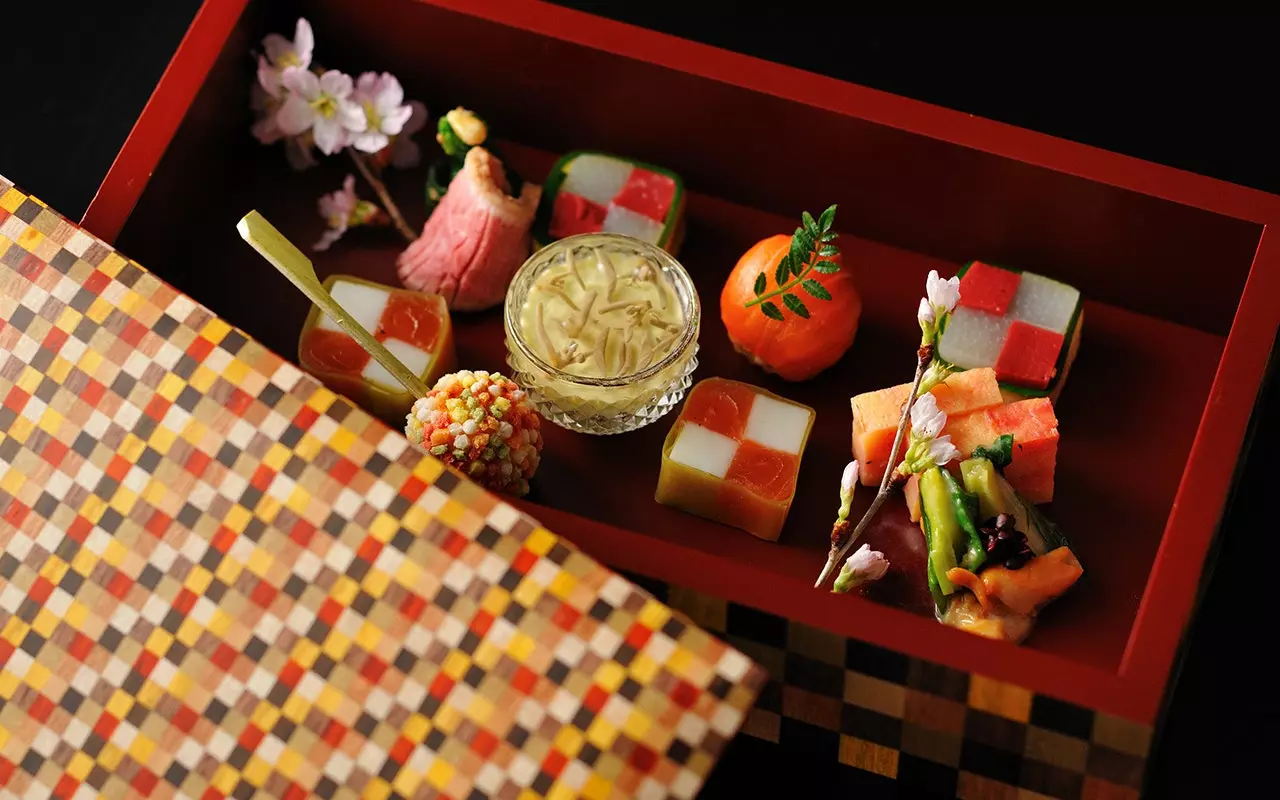
Kaiseki dinners, like this one at the Kai Hakone ryokan, are a visual and culinary festival.
Hakone has 20 hot springs that supply its semi-open baths (to guarantee contact with nature), as well as a mixed area (between the baths for men and women) in which to cool off together and have a drink after the dive : the Yuagari Lounge. Because if, public onsen are segregated by gender, while private baths in guest rooms are not –in both cases they can be outdoors (rotenburo) or not–.
oh! And remember: in more than half of the public baths in the country, according to a report by the Japan Tourism Agency, tattoos are not allowed (unless you can cover them with a dressing that simulates the color of the skin), since they are usually related to organized crime because they were a symbol of the yakuza.
KONANSOU, FUJIKAWAGUCHIKO
The best thing about this hotel that operates as a ryokan at the foot of Mount Fuji is not the extraordinary views of the peak and Lake Kawaguchi from its spacious rooms (also) , but that About twenty of them have an open-air thermal bath on their terrace.
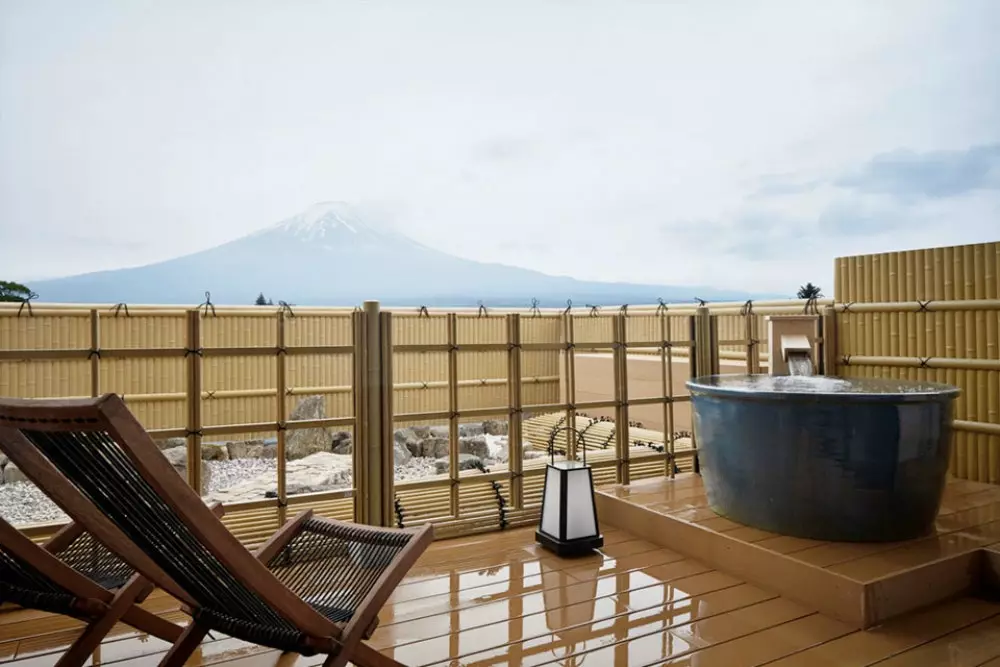
Private bathroom and views of Mount Fuji from the Konansou ryokan.
Why are we commenting on this? Well, because many establishments simply install a bathtub or a bathroom in the rooms without the water coming from a spring and you would be missing out on the healing and anti-aging properties defended by traditional Japanese medicine.
Kanansou, in addition to the community open-air bath, It has three private bathrooms –of large dimensions and also outdoors and with natural waters– that can be reserved for 50 minutes (about €25) for those who are modest or who simply want to enjoy the views of Mount Fuji alone.
ZABORIN, ABUTA-GUN
The 15 private villas of this contemporary ryokan are situated directly on the natural spring of Zabo and baptized each of them with a kamon or Japanese symbol which designates a different type of snowflake. As a courtesy you will find the essential Japanese teas, but also local products such as amenities made with pine trees from the Hokkaido island where it is located.
Although it is equipped with a public onsen in the middle of the garden, its strong point is the two personal and personalized natural baths in each villa (one inside and one on the balcony) : some are made of wood and others of stone.
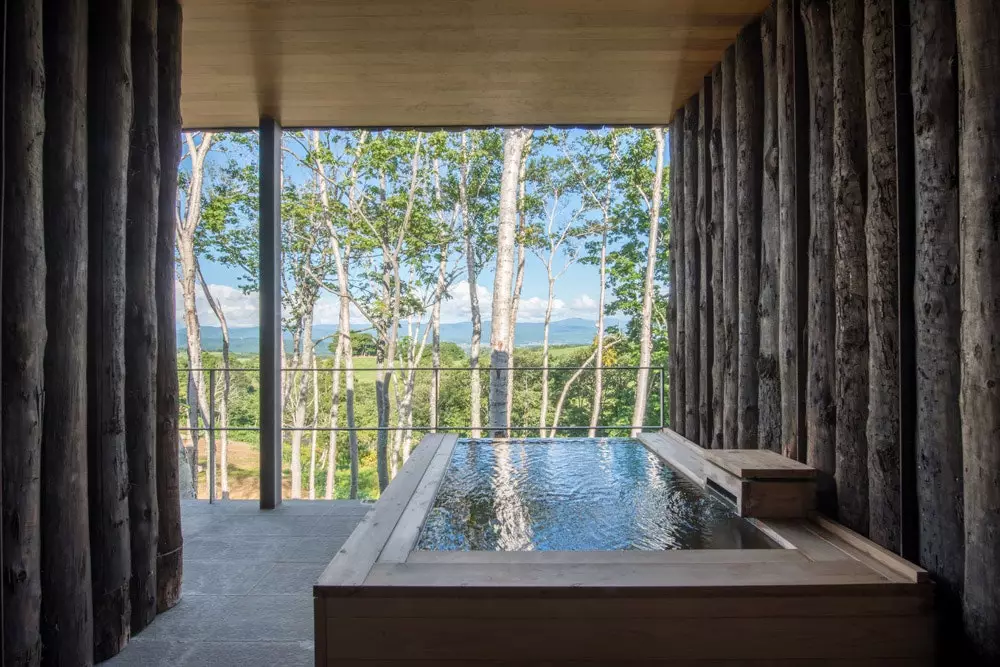
Hot spring bath in the Washitsu village of the Zaborin ryokan.
The property is so aware of the privilege of benefiting from such an idyllic remote setting that it goes to great lengths to be sustainable and environmentally friendly: they reduce, reuse and recycle and they supply their underfloor heating system with water from their hot, volcanic springs.
HOSHINOYA KYOTO, ARASHYAMA
The Japanese chain Hoshino Resorts left the world of travel speechless with its exclusive and innovative concept of an urban ryokan in Tokyo (opened two years ago now), among other things, because it knew very well the tastes of the traveler who seeks to stay in its establishments. Not for nothing had he since 2009 pampering its guests with 100% Japanese luxury of this resort that functions as a modern ryokan.
The Hoshinoya Kyoto rests on the banks of the Oi river, where the flow narrows and the urban landscape of Kyoto is lost in sight and memory to return us to a wild Japan strewn with trees and vegetation. Among its singularities, it stands out that to get there you must take a wooden boat following the course of a river that in the past served to transport people and goods.
There is no onsen here, nor is there a need, because what you come to seek is relaxation and healing of the body and mind through contact with nature in its purest form. It was the architect Rie Azuma who was commissioned to give a miraculously preserved historic ryokan its present form, without forgetting the traditional decorative and construction details of the area, such as Kyoto-style wallpaper (karakami), clay walls and Japanese tiles. For his part, Hiroki Hasegawa, president of Studio On Site, personally supervised the design and landscape architecture.
He takes care of the dinners chef Ichiro Kubota, who embraces and squeezes seasonal ingredients from local producers with Western technique and a lot of traditional knowledge.
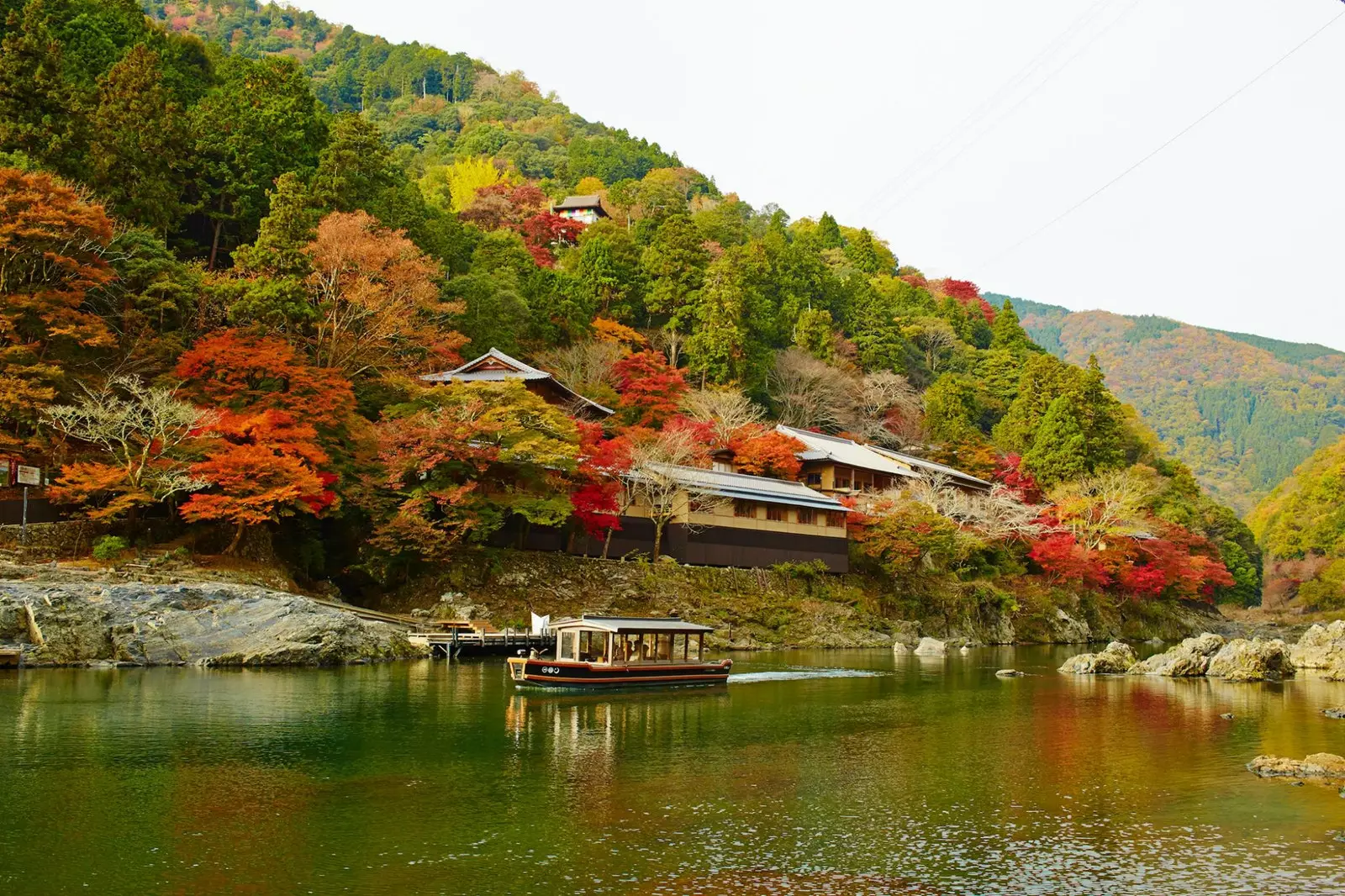
Hoshinoya Kyoto must be reached by sailing on a wooden boat along the Oi River.
